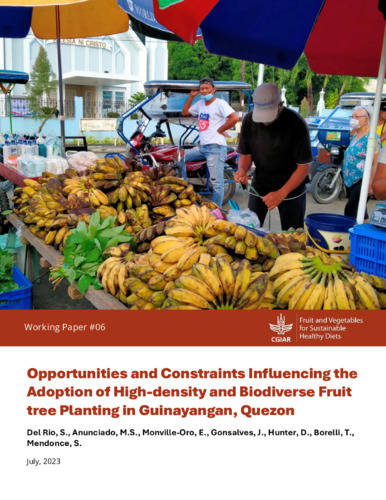Opportunities and constraints influencing the adoption of high-density and biodiverse fruit tree planting in Guinayangan, Quezon
Abstract
The main purpose of this study was to generate evidence on the factors influencing the adoption of diversified fruit tree systems and to assess rural consumers’ views and preferences for local fruits in Guinayangan, Quezon. The Municipality of Guinayangan in Quezon Province was used as the study site because of prior work undertaken by the International Institute of Rural Reconstruction (IIRR), in partnership with the Local Government Unit (LGU), specifically the Municipal Agriculture Office, to promote fruit trees.
This paper presents the result of a study conducted among fruit growers and consumers. To determine the potential for promoting biodiverse fruit tree systems and to determine which fruits are most suitable for the region and likely to be profitable, a survey was conducted among producers and consumers in the study area. Fruit production is viewed as a profitable income generating livelihood and a viable strategy to promote climate smart agriculture and agrobiodiverse systems. Fruit tree growing is normally a secondary source of income in Guinayangan after coconut farming.
Fruit trees are intercropped with coconut trees, allowing farmers to increase their overall yield by intensifying land use. A focus on fruit trees can help create economic spaces for women in coconut farming systems that are primarily male
dominated. Furthermore, diversified fruit tree systems can help conserve agrobiodiversity while serving as a climate change adaptation mechanism. Biodiverse and high-density fruit tree systems are an important way to enhance the nutrition contributions of agriculture, thus serving as a form of nutrition sensitive agriculture.

